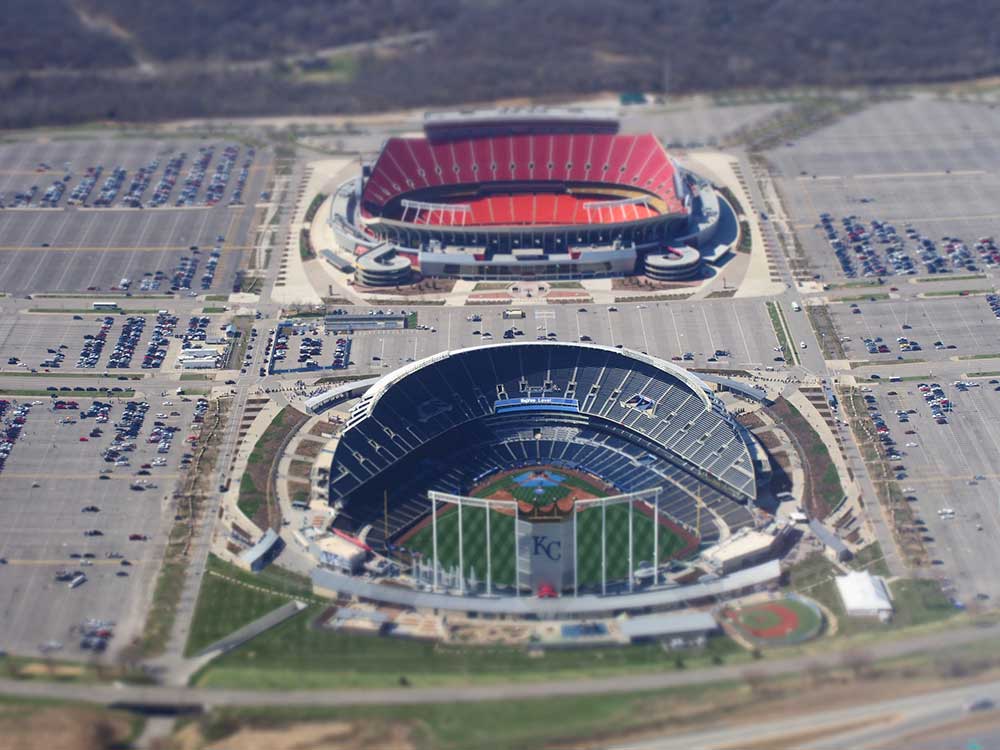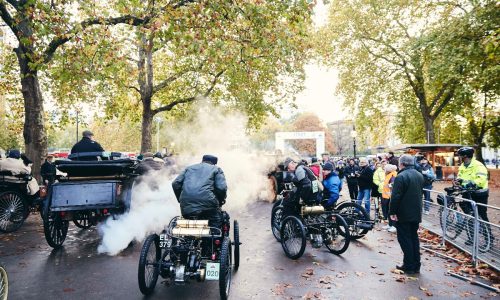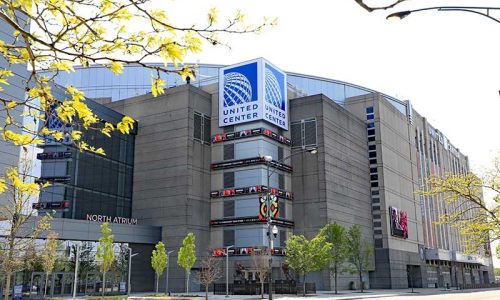This is the first in a series of articles looking at sports venues. Eloy is focused on sports events where attendees rely on the car to get to the venue, and traffic congestion is high. This means several American sports as well as motorsports will feature prominently.
Motorsport is an obvious choice to examine. The fans like their cars and are likely to drive. The speedways are huge and tend to be situated outside urban areas, so driving is a requirement. Similarly, other US Sports, such as MLB (baseball) and NFL (American Football), are usually located in large sports complexes where match day traffic severely impacts the road network.
Our first sports venue under the spotlight is the home of current NFL champions, the Kansas City Chiefs. The Chiefs are based at the GEHA Field at Arrowhead Stadium, which is part of the Truman Sports Complex and shared with the Major League Baseball team the Kansas City Royals.
This series won’t attempt to measure current levels of traffic or judge the performance of existing traffic management services. We don’t have any data about cars travelling to the events which would allow us to measure the current traffic situations – we don’t even know whether this data exists in a suitable format. Traffic management budgets are also a factor, whereby an average performance on a small budget is far better than an average performance on a large budget. We also don’t know how bad traffic would be without the current traffic management services.
Instead, this series aims to identify additional actions and interventions that could be incorporated into the current traffic management services and how they might improve event traffic management for the Chiefs and Royals.
KC Chiefs: current travel information
The Chiefs currently provide a comprehensive set of parking instructions for travelling fans, which includes parking entry and exit routes with recommendations for the most suitable parking based on the direction of travel.

Detailed parking information provided to fans
There are four general sections for parking, essentially covering fans travelling from the North, South, East, and West using Interstates 435 and 70. We’re going to refer to these 4 car park sections as reservoirs. Reservoirs we want to fill with cars and their happy fans.
Fan communication is currently strong, with a detailed website that goes beyond simply providing an address or map reference. It includes interactive maps and current traffic levels provided by Waze.
The Chiefs have a ticket app and also provide strong communications about tailgating and encouraging early travel. This is far superior to simply telling fans not to drive as we see in the United Kingdom.
Area of interest 1: start and end points
The first game of the Season and the NFL Season Kick-Off was on a Thursday. This presents the first potential challenge to solve. Have fans travelled from one location (e.g. work) but intend to travel to a different end destination afterwards (e.g. home)? Are these 2 locations in different places?
The potential impact from different start and end points is that although the car park reservoirs will fill up quickly on arrival as cars park in the section nearest to their approach route, after the game some cars will be in the wrong reservoir for travel home. As a result, a car will need to travel around the stadium on nearby roads before it can join the Interstate travelling in the right direction. If many cars do this, then nearby congestion may substantially increase.

A potential solution to the problem of drivers having different start and end points is the use of dynamic routing based on the end destination. If fans use a bespoke SatNav to navigate to and from the event, the software would be able to determine whether they are in the correct ‘reservoir’ when they enter their end destination address into the SatNav as they prepare to leave the venue. If they are in the wrong reservoir, then the SatNav and supporting cloud software can direct them to the correct section of the car park so they are in the right position to leave.
If it’s not possible for vehicles to travel between car parks, then the SatNav can also dynamically resolve how these ‘incorrectly parked’ cars can limit their impact when circumnavigating the stadium.
Many of us will remember rogue cars attempting to drive the wrong way and blocking the exits – they need better support.
We can also reach fans earlier. For example, when they buy their parking ticket, we could ask them where they intend to travel from and to. This could be as simple as the start and end suburbs, or they could provide more details including the exact address, time of intended travel, and preferred travel routes. The information could be used to pre-select preferences so that our AI coordination software has more time to model venue solutions and offer fans their preferred options.
Area of interest 2: Car park reservoir sizes and design

Map showing exit routes for the Geha field car parks
Due to cost or the way car parks have been built, altering the physical infrastructure may not be possible. However, by running simulations we might find it beneficial to remove some parking spaces between reservoirs to make connections instead. If we can allow reservoirs to expand and contract, we will reduce the need for fans to drive between parking reservoirs, which is where bottlenecks often form.


Increasing a car park reservoir improves traffic flow
Digital services can also work with current car park layouts without the need to make any alterations. For example, we can replace traffic signals or roundabouts with in-car traffic signals, and in-car communications could be used to manage the direction of flow on the road. Digital services can also enhance the capability of traffic marshalls.
Area of interest 3: fan engagement
Of course, the fan experience doesn’t start at the game kick-off. For many fans, the Detroit Lions game on 7th September 2023 has been on their mind since Superbowl 57 on 12th February 2023 – excitement for the next match as reigning champions. More tangibly, the main fan experience started on the day of the game – Thursday 7th September. The fans will have had a plan of how to get to the game, when and where to meet friends, and which car they will drive.
Sports teams know fans are thinking about the game before they leave their homes. Teams have dedicated match day radio for those in their cars who are often stuck in traffic, and this experience could be enhanced with digital services. Collective responsibility for traffic does help and rewarding collaborative driving behaviour with exclusive content offers something different and new. Perhaps the best driver travelling to the game should get a chance to kick a field goal at halftime!
When we build AI software to improve traffic, we use a process called reinforcement learning. This involves turning the road and car parks into a computer game and allowing the AI to solve and complete the game over and over again. A fan experience component allows us to expand the “game” aspect by gamifying the fans’ travel to see the Chiefs.








